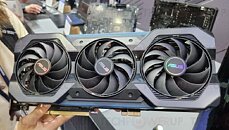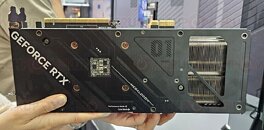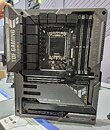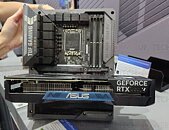- Joined
- Aug 19, 2017
- Messages
- 3,267 (1.13/day)
We witnessed an exciting concept during the Computex 2023 show in late May. ASUS has developed a GPU without an external power connector called GC_HPWR. Unlike current solutions, this connection type doesn't require additional cables. Using the GC_HPWR means that power is being supplied directly from the motherboard and that these special-edition GPUs also require special-edition motherboards. Thanks to the latest information from the Bilibili content creator Eixa Studio, attending Bilibili World 2023 exhibition in Shanghai, China, we have information that ASUS is preparing mass production of these zero-cable GPU solutions. Scheduled to enter mass production in Fall, ASUS plans to deliver these GPUs and accompanying motherboards before the year ends.
Additionally, it is worth noting that the motherboard lineup is called Back To Future (BTF), and the first GPU showcased was the GeForce RTX 4070 Megalodon. The PSU connectors are placed on the back side of the BTF board, while the CG_HPWR connector sits right next to the PCIe x16 expansion slot and looks like a PCIe x1 connector. You can see images of both products below.





View at TechPowerUp Main Site | Source
Additionally, it is worth noting that the motherboard lineup is called Back To Future (BTF), and the first GPU showcased was the GeForce RTX 4070 Megalodon. The PSU connectors are placed on the back side of the BTF board, while the CG_HPWR connector sits right next to the PCIe x16 expansion slot and looks like a PCIe x1 connector. You can see images of both products below.





View at TechPowerUp Main Site | Source



